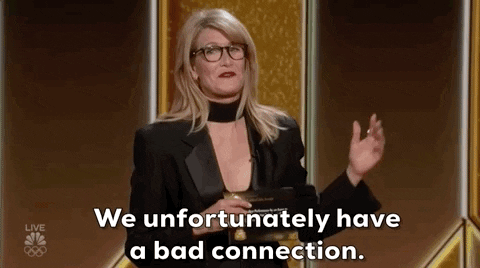Mic Drop #25: Who *is* the target customer for AVOD?
Peacock's complicated, three-tiered value proposition is not unusual in the AVOD marketplace
I recently dove into the road ahead for NBCU’s Peacock in Mic Drop #23: "The Office" on Peacock Is No Longer in Nielsen Ratings (2.0).
This week I want to use Peacock to highlight how value proposition design raised questions back in January 2020 that are now playing out in the weeks leading up to May’s Newfronts and Upfronts.
In that mailing, my read of Comcast’s Peacock Investor Meeting was “Peacock is targeting too many customers to succeed”. The premise of that mailing was to ask a basic question of value proposition design - “Who is the target customer?”.
My conclusion, then, was “Peacock's value proposition needs to make so many different target customers happy, there is a tangible risk that no one will be happy with the Peacock service.” I identified five buckets of customers NBCU was trying to win over with that presentation:
Consumers
Brands/Advertisers
MVPD/Distribution partners
Investors
Engineering and managerial talent
At the core of the pitch was a low Average Revenue per User of (ARPU) of $6-7 for Peacock, 40% below the $10 monthly ARPU Comcast makes from cable subscribers. To boost ARPU, according to CNBC’s Alex Sherman, "either advertising rates or ad load will have to increase, or subscription prices will have to go up".
For advertising rates or ad load to go up, a growing number of consumers will need to be engaging within either the free or AVOD tiers monthly, at scale.For subscription prices to go up, the ad-free tier would need to be “so popular with consumers that Peacock can raise prices”.
If neither happened, the rest of what I predicted would be moot.
15 months later…
We are only weeks away from Newfronts and Upfronts, where Peacock, Paramount+, Hulu, HBO Max, and discovery+ will do a similar song-and-dance for advertisers, only.
Business Insider’s Claire Atkinson reported last week, “Advertisers express doubts that Comcast's Peacock can be a draw for prestige advertisers” ($ -paywalled). The article suggests consumers nor advertisers nor some distributors are happy with the service.
1. Consumers
For the ad-supported tier, Atkinson writes:
An internal source said the company's varied use of "accounts" and "users" to describe uptake had also caused confusion in the marketplace, since more than one person can use a single account. The company also still discusses sign-ups. And little to nothing is shared about how many people are subscribing to Peacock's ad-supported paid tier.
This point was fleshed out a bit more by The Information’s Jessica Toonkel back in February. She reported Peacock then had only 11.3 million “monthly active ad-supported accounts (Active accounts are households and can include multiple viewers).” She also reported:
The data also suggests that Peacock’s priciest $9.99 tier that doesn’t carry ads only drew 4% of people signing up to use Peacock. Most viewers watch either the free tier or the $5 a month tier with some ads.
Putting the two together, the picture we get is:
the majority of viewers use the free or ad-supported tier, and as of February there were only 11.3MM “monthly active” accounts for those two tiers
advertisers know “little to nothing… about how many people are subscribing to Peacock's ad-supported paid tier”, and
4% of people signing up are subscribed to the ad-free tier
Of the 33MM registered users who signed up for Peacock, about a third seem to be happy with it, and less than 5% care about not getting ads.
2. Advertisers
According to Atkinson, above, advertisers seem confused or in the dark about who Peacock’s customer are, and have “expressed reservations whether Peacock would remain a draw for prestige advertising after it opens the door to programmatic ads”, according to Atkinson.
The story is not entirely negative:
"Peacock has definitely met or exceeded expectations," Horizon Media's cochief investment officer, David Campanelli, told Insider. "They are outperforming their average-active-user estimates, which is good to see, and content has been high quality as expected."
Rather, the story is advertisers are happy to pay for Peacock, but they will not pay a premium. Atkinson reports NBCU leadership is telling advertisers that inventory on Peacock will cost the same as on primetime TV, or $100 CPM per 30 seconds. But advertisers are neither seeing the premium audience or the scale to justify that price.
3. MVPD/Distribution partners
Peacock has an interesting relationship with MVPD/Distribution partners, to date. It has distribution via Cox, it has a promotional deal with Charter, and it has distribution via Roku, Xbox, and Playstation.
It is in over 65MM broadband homes (in ~30MM homes via Comcast’s Xfinity,~30MM homes for Charter Spectrum, and in~5MM homes via a deal with Cox Communications). With 105MM to 110MM Broadband-connected homes, Peacock has effectively reached its objective of “a very large portion of the country that’s going to have access to the premium version of Peacock for free through bundling”.
But, it does not have distribution via Amazon Fire TVs (50MM+) nor via Amazon Prime Channels (200MM available audience). Notably its biggest pain point seems to be local distributors:
Peacock also is causing a headache for station groups as NBC-branded content goes online and takes eyeballs away from their local TV viewership — an issue they're likely to bring up the next time they negotiate the license fees they pay the network.
Roku treats distribution partnerships like the one it has with NBCU’s Peacock as “win-win”, as Roku SVP Scott Rosenberg told CNBC’s Alex Sherman last July ($ - paywalled):
So the best, winning recipe is a model, an economic relationship between the parties where we’re both winning, we’re both earning as we drive the success of these apps. That’s what we seek and ultimately, in some cases, it takes us a little longer to get there with the parties
It is an open question of whether Roku is finding win-win outcomes with Peacock, which has an active base 22% the size of its install base for The Roku Channel (51.2MM).
Who is the customer for Peacock?
It’s hard to argue that no one is “happy” with Peacock: advertisers are happy with the metrics they have seen to date, and there are at least 11.3MM registered users who will pay for either the paid or ad-supported tier. Local TV affiliates are grumbling about losing eyeballs to online, but Peacock’s disappointing numbers, to date, suggests there’s more irrational fear than evidence warranting that fear.
It’s easier to argue that neither consumers nor advertisers nor distribution partners need Peacock as a service. “Need” is one of the questions value proposition design asks: what pains does a service help to solve for a customer, and/or which gains does it create for them?
It is a simple, 101-level question that is surprisingly difficult to answer for Peacock. Part of the blame for that falls on NBCU: it launched a streaming service without The Office, without a sufficient library of original content to win over users, and without the pay-TV rights to Universal movies, which are licensed to WarnerMedia’s HBO & HBO Max through 2022. One year later, the addition of The Office doesn’t appear to be moving the needle on subscribers.
But, also part of the blame falls to bad luck: the pandemic delayed The Summer Olympics into 2021, and Peacock’s launch had been built up around that tentpole event. It would not be unreasonable to argue Peacock’s registered users and monthly active users numbers would have been better with the Olympics. Maybe that will change this summer, but it seems objectively clear that consumers are not finding Peacock to be a must-have, and and exclusive Olympics content seems unlikely to change that much.
Who is the customer for an AVOD service?
This feels like the right question to end on with Upfronts and Newfronts fast-approaching. There is a helpful article last week, written by Simulmedia Founder and CEO Dave Morgan, and it highlights four key points:
The linear TV viewing shift to streaming will take many years
Streamed ad experience needs massive improvement
Streaming ad reporting and measurement is a mess
All about time, iteration and long-term commitment
His core point is, “the folks who really control whether ad-supported streaming services will take off — viewers — have yet to put their time and attention behind ad-supported streaming in a substantial way”.
I think Morgan is right here, but I think it is worth focusing on Peacock’s free tier and other free AVODs (NOTE: I find the FAST acronym confusing) to highlight a market dynamic he is missing: “less is more” is the best value proposition in AVOD.
Tubi TV has 33MM domestic Monthly Active Users (MAUs) and is projected to earn $300MM in fiscal 2021, and Fox Corporation CEO Lachlan Murdoch projects it “becoming a $1 billion business and a core pillar of Fox”.
Pluto TV has 30MM+ domestic MAUs and is projected by eMarketer to earn $786.7 million in net US ad revenues in 2021 (a 77.7% increase over the previous year), and $1 billion annually for the first time in 2022.
YouTube reported 120MM people watched YouTube or YouTube TV on their TV screens in December 2020 as they were spending time at home, and over a quarter of logged-in YouTube viewers watched content almost exclusively on a TV screen.
In short, free AVOD services are finding better scale, better use cases on U.S. TVs, and better revenues than Peacock’s free tier. Viewers are putting their time and attention behind free ad-supported streaming “in a substantial way”. To be fair, they all offer programmatic advertising and Peacock has yet to, so it’s not an apples-to-apples comparison. But, as I wrote in the Member Mailing on Wednesday:
According to ViacomCBS’s presentation at its Streaming Event in February, it earned $845M in domestic U.S. advertising revenues in 2020. Going off of eMarketer’s estimates, above, if Pluto TV made $440MM in 2020 that means CBS All Access was responsible for a large percentage of $405MM. In other words, six to seven years after launch, Paramount+’s earlier iteration of CBS All Access was closer to Tubi TV’s $300MM in revenues than Pluto TV’s revenues.
Legacy media bets on AVOD with paid tiers don’t seem to be must-haves for consumers or advertisers. The only exception is Hulu, which reached 28MM subscribers as a jointly-run entity before it was acquired by Disney, and now reaches 35.4MM subscribers (40M if you include Hulu+live subscribers). Notably it only offers paid tiers, and its 26% growth since acquisition has in part been driven by the Disney+/ESPN+/Hulu bundle.
Free AVOD services offer more clearly defined value propositions than a free tier of a legacy media AVOD: Pluto TV offers ad-supported linear TV-like channels, and Tubi TV offers free ad-supported viewing of Fox’s show and movie libraries. The Roku Channel’s 51.2MM MAUs consume that service for a similar reason to the tune of $1.3B in revenues in 2020.
As a consumer, it is easy to understand what each of those services offer that is unique, and as an advertiser it is easy to understand who the consumer is and why they use each service vis-à-vis the other.
Peacock’s three different tiers have tried to please five different customer buckets, but have left three of the most important customers - advertisers, consumers, and distributors - objectively confused. The result, according to Comcast’s 10-K, it lost $914MM on Peacock in 2020. With discovery+ planning a free tier, and Paramount+ implicitly leveraging Pluto TV as its free tier, the same mistake risks being repeated with the same buckets of customers across the marketplace.1
The value proposition lens and the AVOD marketplace tell us “less is more” is the best approach for legacy media companies in ad-supported streaming. Why don’t more legacy media companies listen to that message?
A recent YouTube interview with Tom Ryan, President & CEO of Streaming at ViacomCBS, revealed that it will add Pluto TV-type “linear interest-based channels” to Paramount+.









